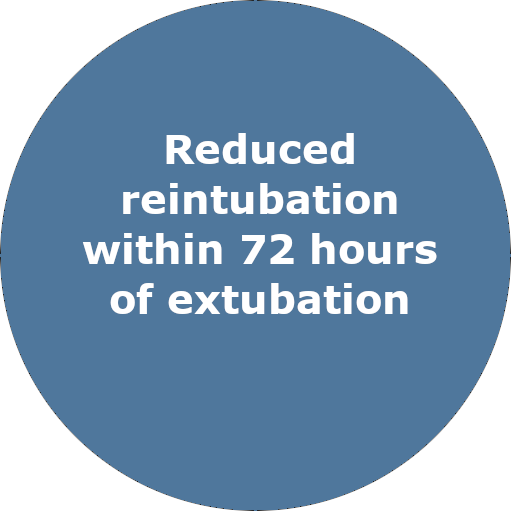Optiflow™ Nasal High Flow post extubation
In 1997, Epstein1 and colleagues examined patient outcomes associated with reintubation for extubation failure. They determined that patients who failed extubation had:
In 1997, Epstein1 and colleagues examined patient outcomes associated with reintubation for extubation failure. They determined that patients who failed extubation had:



In previous editions we have shared the results of key studies by Frat3 and Maggiore4 demonstrating the efficacy of Optiflow™ in avoiding primary intubation as well as reintubation.

Although the primary outcome of the Frat study was not met, it was shown that for the more acute patients (with a PaO2:FiO2 ≤ 200 mmHg):

Maggiore’s 2014 study investigated reintubation rates in a general population of critical care patients and found that:
We are pleased to present a summary of the results of the Hernández5 study recently published in the Journal of the American Medical Association (JAMA). This study focused on patients deemed at low risk for reintubation and found a reduced risk of reintubation within 72 hours of extubation.




The primary outcome of the study was met. 527 patients were included and randomized to NHF (n=264) or standard oxygen therapy (n=263) (mean age 51.4 years, 62% male) with the following results:


This well-designed study provides compelling evidence that use of NHF immediately after planned extubation can reduce 72-hour reintubation rates in low-risk patients compared to conventional oxygen therapy.
These findings have significant implications not only on patient care, but also on costs of treatment. A secondary analysis of the patients who underwent reintubation showed increased ICU and hospital stays
compared to those successfully extubated.